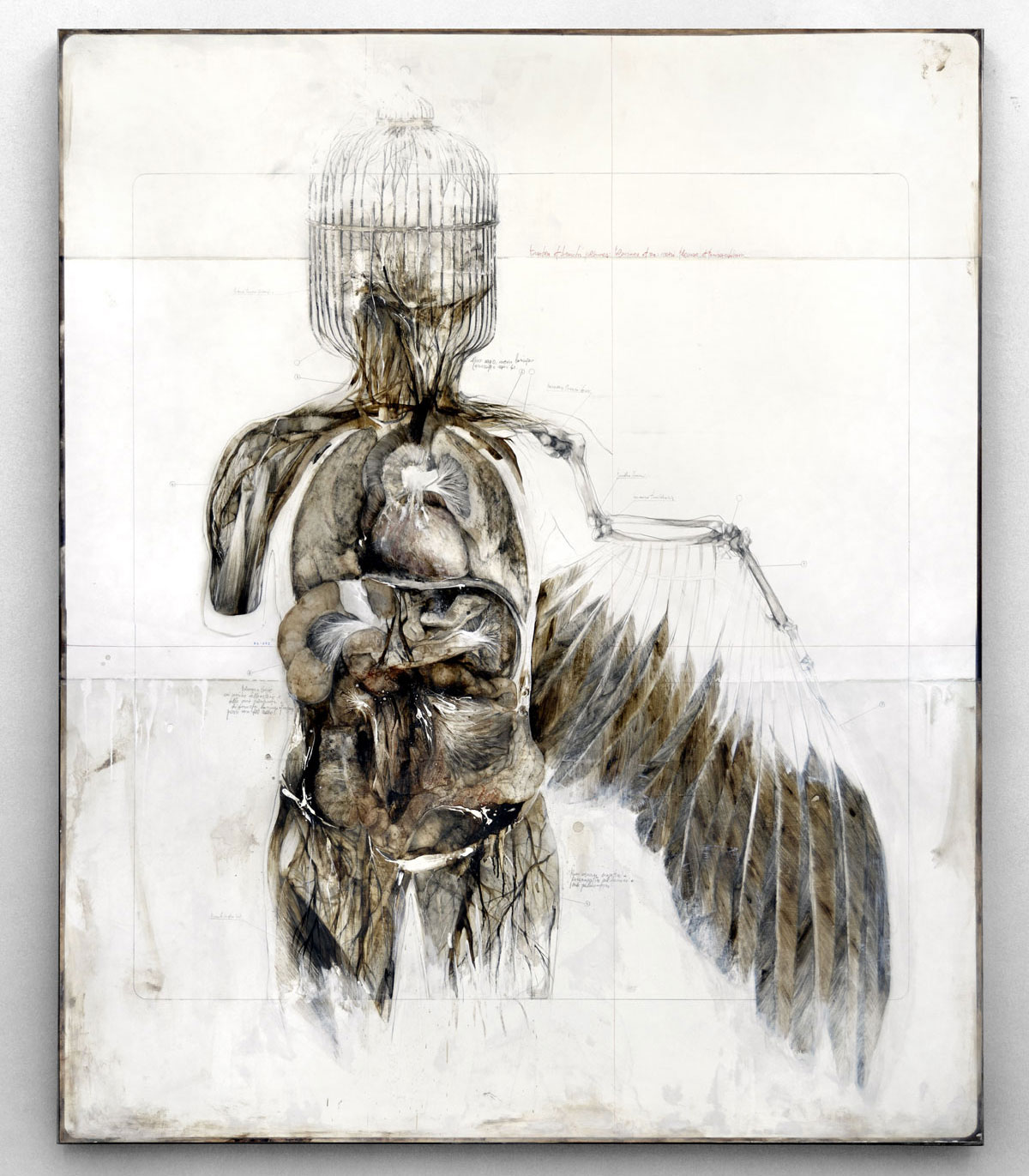Artist Nunzio Paci, born in Bologna but working in Italy, focuses on the “relationship between man and Nature” in order to “explore the infinite possibilities of life.” His work combines images of humans and nature to demonstrate this relationship. Many of his paintings use a mixture of sepia, gray, and white colors on canvas.
One of the paintings that first caught my attention was Anatomia di un alato (Anatomy of a winged), which combines representations of the human body with physical characteristics of a bird. What I find to be the most interesting in the cage that takes the place of the human head; perhaps this is a symbol of the “winged” or a representation of what humans do to winged creatures. The painting appears to be mimicking an anatomy book (in the way that it includes small scribbles about the parts of the figure) while breaking the conventional through depicting a fantastical mix of human and animal features. I thoroughly enjoy the way in which Paci combines realism with a sense of fantasy, suggesting, perhaps, that a bigger story lies beneath the surface.
Another piece that caught my eye is The Wind that sculpts your veins. The fact that both human forms and nature co-exist in this composition fascinates me; the intertwining of the veins and what appears to be branches pulls the viewer in. Once the eye wanders to the small bird perched on top of a branch stemming out of the head, it is easy to see that Paci intended for the relationship between human and nature to be somewhat literal here. The limited palette of color that Paci uses does not distract but draws attention to the forms that intermingle. Again, Paci mirrors the pages of an anatomy book by including writings on features of the figure, and he demonstrates an understanding of human anatomy and components of nature in the piece.
I admire Paci’s ability to create unique fantastical creatures combining features of nature and the human form. I would like to step out of my box of realism and try out new forms of human representation, which Paci does masterfully in his paintings and drawings. Each painting initiates conversation about the relationship between nature and man that Paci strives for in his compositions.





